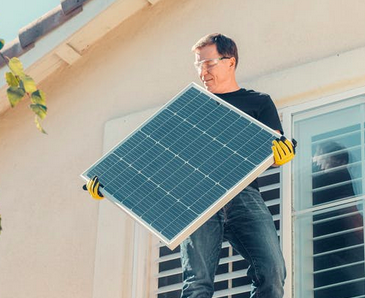Financing Help for Switching to Residential Solar Power
Solar is attractive to homeowners for a range of reasons. From lowering (or even eliminating) energy bills to helping them achieve greener, more environmentally responsible lifestyles, solar plays an integral role in not only helping Americans become energy independent, but it also is one of the biggest contributors to helping heal the planet.
Because of its environmental benefits, both the federal and state governments offer a variety of programs and incentives to make it easier and more affordable for homeowners to make the switch to solar. If you are thinking about going solar and you want to learn more about your state’s incentives, what tax breaks are available to you, and what type of financing options there are, then this post will help guide you in the right direction.
State Solar Incentives
Depending on which state you live in, you may be eligible for certain state or local solar incentives that can help you save money on your solar installation. Of course, because these incentives are determined by state’s governing body, not every state offers them. For instance, states like Alabama, Alaska, Arkansas, and Georgia are just a few that offer no solar rebate programs, no property tax exemptions, and no income tax credits.
Currently, just 25 states offer solar sales tax exemptions and 36 offer some form of property tax exemptions for solar. To find out what types of solar incentives are available in your state, World Population Review has compiled a detailed list for 2022 which you can find here.
Solar Federal Tax Breaks
Even if you reside in a state that doesn’t offer local solar incentives, you will still qualify for the federal solar tax credit, or investment tax credit (ITC). The federal solar tax credit was introduced in 2006 as part of the Bush administration’s Energy Policy Act. It has been set to expire a couple of times thus far, but Congress has continually voted to renew it.
The ITC is designed to help offset the initial cost of solar by allowing taxpayers to claim 26% of the total installation cost of their home solar project on their federal income taxes. According to the current schedule, the federal solar tax credit will drop to 22% in 2023, and then in 2024 it will be phased out completely for residential systems unless Congress acts to renew it again or the Biden administration’s Build Back Better Act successfully passes.
Should the Build Back Better Act pass, the federal solar tax credit would be increased to 30% and be available for at least 10 years, and a standalone tax credit for solar batteries would also be made available. Of course, this all depends on whether the act will pass.
Financing Options for Solar
Purchasing solar in cash is the quickest way to enjoy the biggest return on your investment. But with the average solar installation costing about $20,000, not every household has that kind of money to spend. As a result, financing solar through a loan is the easiest and most affordable way for most families to make the switch to solar.
If you have enough equity in your home, then taking out a home equity loan is one way to cover the cost of your solar installation, but it isn’t the only one out there. Today, several companies offer solar loans, which are essentially unsecured personal loans with fixed interest rates and terms from two to seven years.
Solar loans have intentionally short repayment terms because they are designed to help you to clear the debt sooner, so you can start taking advantage of the financial savings your solar system will provide. Some popular solar loan providers include:
When choosing a lender for your solar loan, it’s always recommended to compare offers and to choose one with a reputation for delivering good customer service. There are a lot of financing options available, so do your research to ensure that you get the best rate and terms from a company that you can trust.

